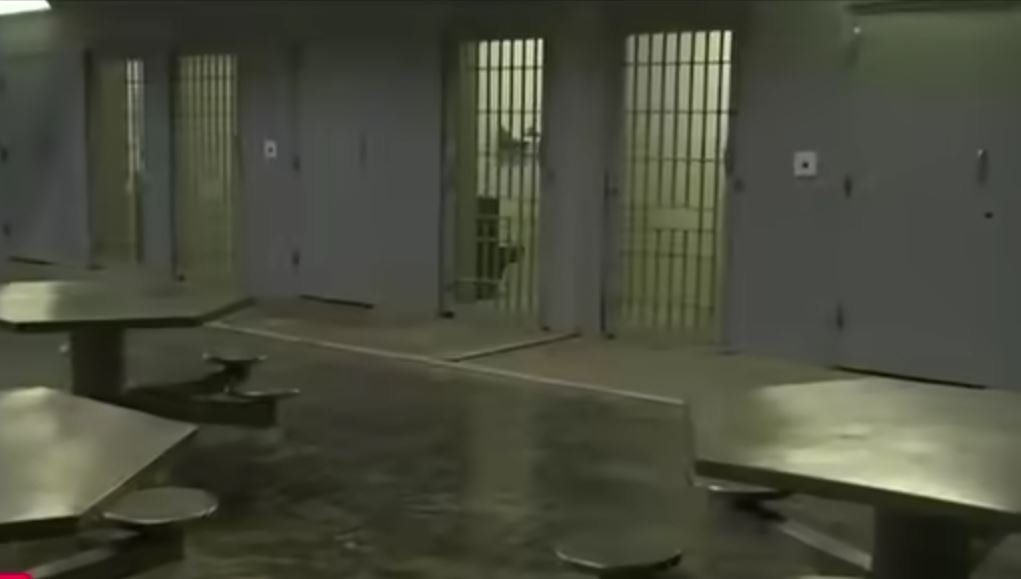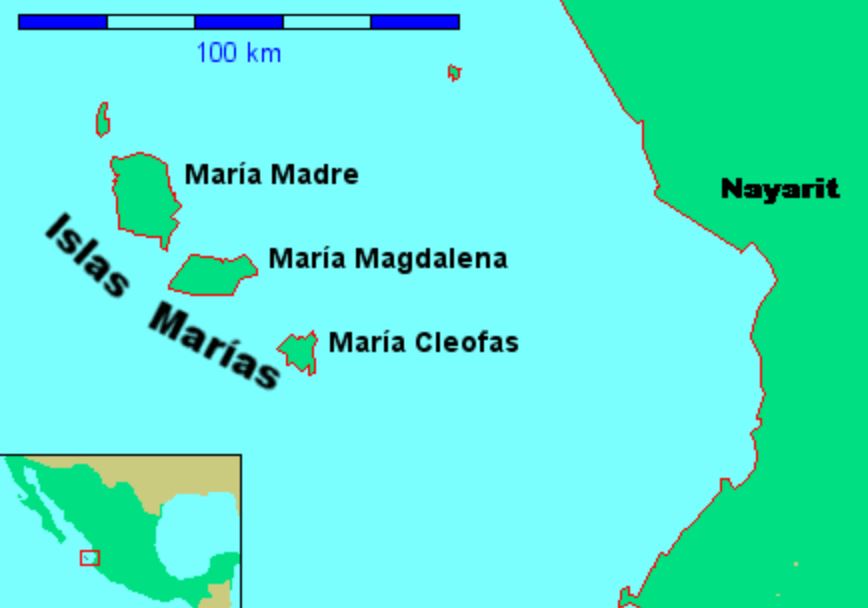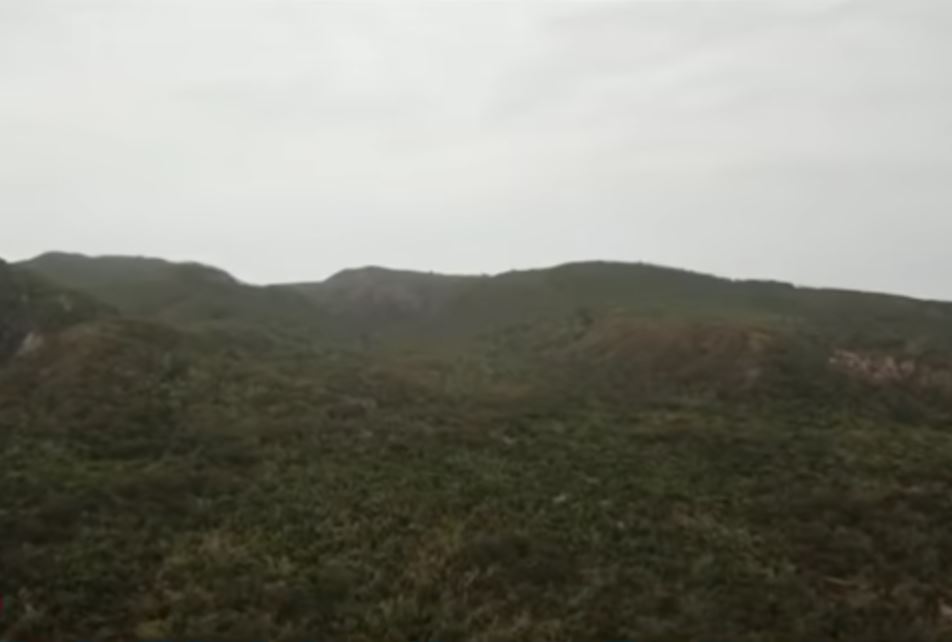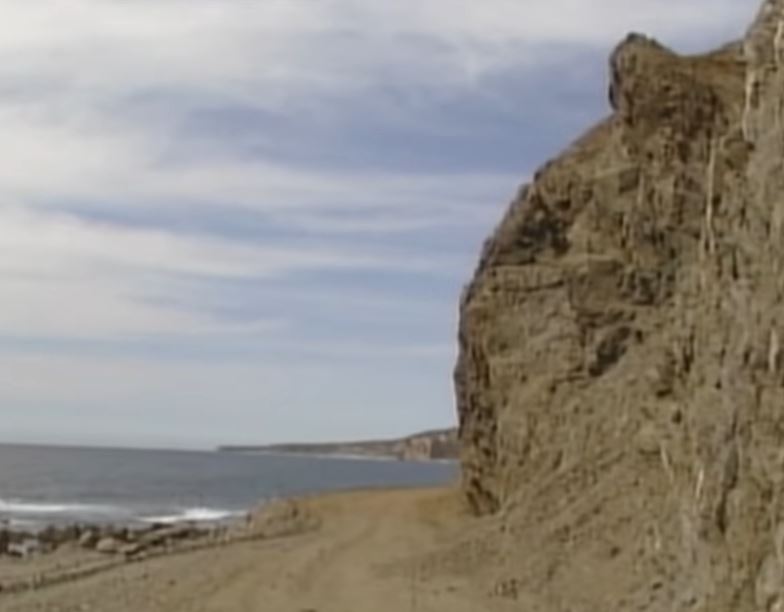Podcast: Play in new window | Download
Subscribe: Apple Podcasts | RSS
 The year was 1928. The Mexican government had just sentenced a 14-year-old boy to the dreaded Las Marías Penitentiary. The teenager was communist party member and radical political activist José Revueltas. He would spend a few years there and would then return later in his life. Although considered harsh punishment for a teenage boy even at that time, Revueltas would later use his experiences while incarcerated as inspirations for several novels and other shorter works critical of the Mexican government. By the 1960s Revueltas had become one of the leading intellectuals behind the student disturbances of 1968 and was considered one of Mexico’s most important communist intellectuals of his day. When he was purged from Mexico’s communist party in 1943, he founded the Spartacus Leninist League, a more radical political action group. In and out of prison for his political dissent and other anti-government activities, José Revueltas never forgot the lessons learned during his first incarceration in Mexico’s famous island prison in the Las Marías.
The year was 1928. The Mexican government had just sentenced a 14-year-old boy to the dreaded Las Marías Penitentiary. The teenager was communist party member and radical political activist José Revueltas. He would spend a few years there and would then return later in his life. Although considered harsh punishment for a teenage boy even at that time, Revueltas would later use his experiences while incarcerated as inspirations for several novels and other shorter works critical of the Mexican government. By the 1960s Revueltas had become one of the leading intellectuals behind the student disturbances of 1968 and was considered one of Mexico’s most important communist intellectuals of his day. When he was purged from Mexico’s communist party in 1943, he founded the Spartacus Leninist League, a more radical political action group. In and out of prison for his political dissent and other anti-government activities, José Revueltas never forgot the lessons learned during his first incarceration in Mexico’s famous island prison in the Las Marías.
12 hours by boat, off the Pacific coast of the Mexican state of Nayarit, there exists a small remote archipelago of 4 islands and 5 rock outcrops. Sometimes called Las Tres Marías, or “The Three Marys” in English, the three main islands of this group were named after biblical Mary figures. The main island, María Madre, was named after Mary, the mother of Jesus. The second-largest island’s name, María Magdalenda, comes from Mary Magdalene, a close female follower of Christ and a witness to both the crucifixion  and resurrection. The third of the Tres Marías is the island of María Cleofas, named for another Mary present at the crucifixion. The fourth main island of the chain, much smaller than the three islands bearing the name María, is San Juanito, which is also the northernmost island. The five rock outcrops in the archipelago are Isla Don Boni, Piedra El Morro, Piedra Blanca, Roca Blanca and Roca Sin Nombre. The islands are tropical and for the most part covered with lush vegetation serving as home to much interesting flora and fauna. Some animals are only found in these islands. The Tres Marías deer mouse lives in one place on earth: María Cleofas Island. The Tres Marías Raccoon was once thought to be a separate species of raccoon, but it is now regarded as a subspecies. The Tres Marías Amazon is a yellow-headed parrot and is unique to the islands. Many feral goats, dogs and cats also call the island chain home. Many unique subspecies of flowers, trees and other plants also exist in the Tres Marías Islands.
and resurrection. The third of the Tres Marías is the island of María Cleofas, named for another Mary present at the crucifixion. The fourth main island of the chain, much smaller than the three islands bearing the name María, is San Juanito, which is also the northernmost island. The five rock outcrops in the archipelago are Isla Don Boni, Piedra El Morro, Piedra Blanca, Roca Blanca and Roca Sin Nombre. The islands are tropical and for the most part covered with lush vegetation serving as home to much interesting flora and fauna. Some animals are only found in these islands. The Tres Marías deer mouse lives in one place on earth: María Cleofas Island. The Tres Marías Raccoon was once thought to be a separate species of raccoon, but it is now regarded as a subspecies. The Tres Marías Amazon is a yellow-headed parrot and is unique to the islands. Many feral goats, dogs and cats also call the island chain home. Many unique subspecies of flowers, trees and other plants also exist in the Tres Marías Islands.
Diego Hurtado de Mendoza, a cousin of conquistador Hernán Cortés, discovered the Tres Marías archipelago in the year 1532. He christened the islands Islas Magdalenas. Hurtado de Mendoza was exploring the west coast of Mexico and the offshore islands to claim all newly discovered lands for his famous cousin in an agreement Cortés had with the Spanish Crown. When the small group of explorers made landfall in the islands on that day in 1532 there were no signs of previous habitation. No evidence of ancient Native American habitation has since been found in the Islas Marías and no legends or histories exist among indigenous groups on the mainland indicating any knowledge of the existence of the islands. For most of the Spanish colonial period, the islands saw few visitors, and the viceregal government in Mexico City paid little attention to them. Even though the conquistador Hernán Cortés technically owned the islands as his private property, they were not passed down to his heirs, nor was any claim made on the islands by Cortés’ descendants. Like other islands off Mexico’s Pacific coast, the Marías had many visits from English and Dutch pirates as well as Russian sealers and American whalers. As with other remote islands throughout the world, early sailing ships left goats on the islands to serve as a future food source. The goat colony there maintained a steady level of population and did not completely destroy the ecosystem as in other places. Unlike many other islands in the Pacific, the Islas Marías were never claimed by the United States under the Guano Islands Act of 1856. This act, with the backing of the US Congress, had many Yankees sailing all over the Great Southern Ocean laying claim to every atoll, rock and key that had guano deposits on it. Because the Marías had no guano deposits, they were safe from the guano miners and American territorial expansion. However, in the mid-1800s the islands saw many visits from American flora and fauna collectors, specifically those interested in trafficking in the yellow headed parrot to  sell to wealthy buyers in US markets. The Mexican government of Benito Juárez was the first administration to look at the islands critically and was interested in either exploiting them economically or locating a prison there. The prison idea didn’t die and by the time of the presidency of Porfirio Díaz, the Mexican government started making plans to use the islands as a penal colony. Island prison colonies were something of the fashion at the time. Alcatraz in San Francisco Bay and Devil’s Island off the coast of French Guiana in South America were famous island prison colonies in the late 1800s. Porfirio Díaz also saw expansion into and development of Mexico’s minor island territories as a way to increase national pride. In the late 1800s while the European powers and the US were acquiring overseas colonies, Mexico would, too, in its own way do this and keep it all closer to home. At the same time Díaz was making plans for the Islas Marías he also sent a group to establish a Mexican colony on an uninhabited island in French Polynesia called Clipperton, or Isla de la Pasión. For more information about Mexico’s failed colony in Polynesia, please see Mexico Unexplained episode number 24. https://mexicounexplained.com//isle-passion-mexicos-failed-colony-french-polynesia/ As with Clipperton, on Isla María Madre President Porfiro Díaz began with a lighthouse. By 1905 Díaz had his prison.
sell to wealthy buyers in US markets. The Mexican government of Benito Juárez was the first administration to look at the islands critically and was interested in either exploiting them economically or locating a prison there. The prison idea didn’t die and by the time of the presidency of Porfirio Díaz, the Mexican government started making plans to use the islands as a penal colony. Island prison colonies were something of the fashion at the time. Alcatraz in San Francisco Bay and Devil’s Island off the coast of French Guiana in South America were famous island prison colonies in the late 1800s. Porfirio Díaz also saw expansion into and development of Mexico’s minor island territories as a way to increase national pride. In the late 1800s while the European powers and the US were acquiring overseas colonies, Mexico would, too, in its own way do this and keep it all closer to home. At the same time Díaz was making plans for the Islas Marías he also sent a group to establish a Mexican colony on an uninhabited island in French Polynesia called Clipperton, or Isla de la Pasión. For more information about Mexico’s failed colony in Polynesia, please see Mexico Unexplained episode number 24. https://mexicounexplained.com//isle-passion-mexicos-failed-colony-french-polynesia/ As with Clipperton, on Isla María Madre President Porfiro Díaz began with a lighthouse. By 1905 Díaz had his prison.
The famous teenage prisoner on Las Marías, the activist and author José Revueltas, wrote a book in 1941 called Los muros de agua, or in English “Walls of Water” which aptly described the prison situation itself. Inmates were subject to various degrees of incarceration. Since there was nowhere to go, the ocean literally served as a prison wall that prevented escape. The early days of the prison were filled with stories of hard labor and torture. In the first few decades the prisoners at Las Marías cut down most of the tropical hardwoods on the main island of María Grande and built most of the infrastructure in the small settlements of the island, notably Puerto Balleto and Bugambilias. The penal colony also had small-scale manufacturing in workshops, and farms that produced products for export to the Mexican mainland. It’s important to note that all of this activity happened on Isla María Grande. Besides brief expeditions by support staff connected with the prison operation, the other 8 islands and rocks of the group remained untouched. Throughout most of the 20th Century the prison population was not comprised of hardened criminals. At various points in time even families were allowed to live with the prisoners in private homes on the island or were allowed 15-day visits from the mainland. Children of prisoners and those of the support staff needed a school, and there also was a need for shops and other services, so eventually the prison island developed a town with a solid infrastructure including a small hospital, stores, and even a home for a small congregation of nuns connected with the Isla María Chapel in Puerto Balleto. For many years, the colony was completely self-sufficient, raising fruits and vegetables and livestock and manufacturing its own items to sustain the island’s population.
Sometimes prisoners tried to escape by making crude watercraft under the cloak of darkness. No one ever made it to shore unassisted, though, because it was 62 miles to the coast of Nayarit and 230 miles from the southern tip of Baja. In 2011 6 prisoners escaped by using plastic containers as flotation devices. They made it 60 miles south of the islands, but passing boats spotted the inmates and they were returned to Las Marías. The penal colony has logged 76 successful escapes, but these were done with the assistance of prison officials, ferrymen and other support staff who accepted bribes to get the escapees off the island. In 1986 an entire family of kidnappers, the Reyes Servín brothers, fled the island and have never been heard from since. Out of the 76 successful escapes, only 10 prisoners were captured. Many potential fugitives were deterred from making their own rafts to escape because, like Alcatraz, there were rumors of sharks in the surrounding waters. Escapees often fled to the jungle-covered hills in the island’s interior but rarely did anyone elude capture for more than a few months. Ultimately, there was nowhere to go.
 By the beginning of the 21st Century, the Islas Marias prison was the last island penal colony left in the Americas. The French shut down Devil’s Island off the coast of South America in 1946. Alcatraz saw its last inmate leave in 1963. Peru completely destroyed its last island penal colony, El Fontón, in 1986 by using a gunboat to fire on the island to put down a prisoner uprising that ultimately killed 100 inmates. Chile closed its Santa María island prison in the late 1980s. Brazil’s Ilha Grande shuttered its doors in 1994. By the year 2000 there were only two island prisons left in the Western Hemisphere, Mexico’s Islas Marías and the Coiba prison island in Panama. The Panamanian prison closed in 2005. On February 18, 2019 Mexican president Andrés Manuel López Obrador announced the closure of Islas Marías. He cited that it was more expensive to maintain a prisoner on the island than it was to house one on the mainland, and Mexico’s jails were nowhere near capacity. The president also cited the tendency of the island chain to be hit by violent tropical storms that cause large amounts of damage. The last such storm to hit the archipelago was Hurricane Willa in October of 2018. That hurricane alone caused over $150 million in damage to the islands. In López Obrador’s push for “more schools and less prisons,” he had a grand plan to convert the penal colony into an educational center for Mexican schoolchildren.
By the beginning of the 21st Century, the Islas Marias prison was the last island penal colony left in the Americas. The French shut down Devil’s Island off the coast of South America in 1946. Alcatraz saw its last inmate leave in 1963. Peru completely destroyed its last island penal colony, El Fontón, in 1986 by using a gunboat to fire on the island to put down a prisoner uprising that ultimately killed 100 inmates. Chile closed its Santa María island prison in the late 1980s. Brazil’s Ilha Grande shuttered its doors in 1994. By the year 2000 there were only two island prisons left in the Western Hemisphere, Mexico’s Islas Marías and the Coiba prison island in Panama. The Panamanian prison closed in 2005. On February 18, 2019 Mexican president Andrés Manuel López Obrador announced the closure of Islas Marías. He cited that it was more expensive to maintain a prisoner on the island than it was to house one on the mainland, and Mexico’s jails were nowhere near capacity. The president also cited the tendency of the island chain to be hit by violent tropical storms that cause large amounts of damage. The last such storm to hit the archipelago was Hurricane Willa in October of 2018. That hurricane alone caused over $150 million in damage to the islands. In López Obrador’s push for “more schools and less prisons,” he had a grand plan to convert the penal colony into an educational center for Mexican schoolchildren.
Since the prison’s shutdown, the Islas Marías have seen a gradual transformation. Many of the small businesses and the pre-shutdown population have remained during this transition to tourism and education. Before the islands are open to large-scale tourism, to include resorts and hotels, however, there must be repairs made to the damage done to the island’s ecosystem. While 8 of the islands and rocks of the chain remain in near-pristine condition, over 100 years of the activities of a penal colony put a great strain on the Isla María Grande biosphere. Efforts have been made in recent years to replant the hardwood trees logged in the early part of the 20th Century. The Mexican government has also been encouraging restoration of more habitat for the unique yellow-headed parrot native to the islands. For many years, the birds’ population had been decreasing as many family members visiting inmates would smuggle the parrots to the mainland to sell at high prices to exotic pet brokers. The main prison complex is in the process of being converted into a visitors’ center and is named after the island’s most famous inmate, José Revueltas. While there is much work yet to be done, the Mexican government intends to finish the job in the next few years and the Islas Marías will return to its idyllic state once again.
REFERENCES
“‘Mexico’s Alcatraz’ Prison to be Turned into a Cultural Centre,” in The Guardian, 18 Feb. 2019.
Excelsior TV (in Spanish) “Asi lucen Las Islas Marias”
TVMas (in Spanish) “Las Islas Marias”
To explore the writings of Jose Revueltas, the most famous prisoner in the Islas Marias Penitentiary, click the Amazon link here: https://amzn.to/3aHLEMW (Mexico Unexplained is an Amazon affiliate).
